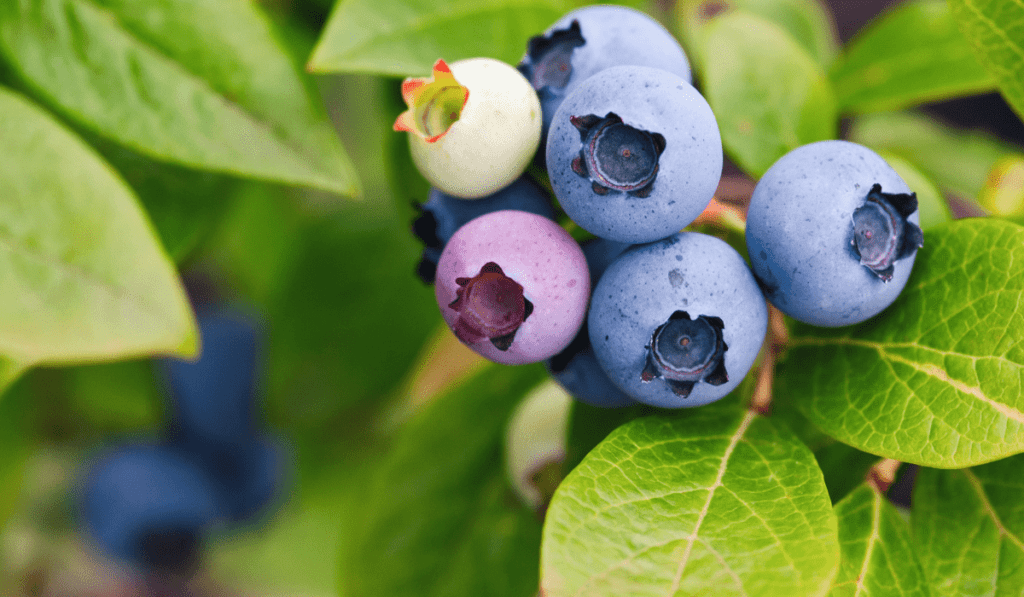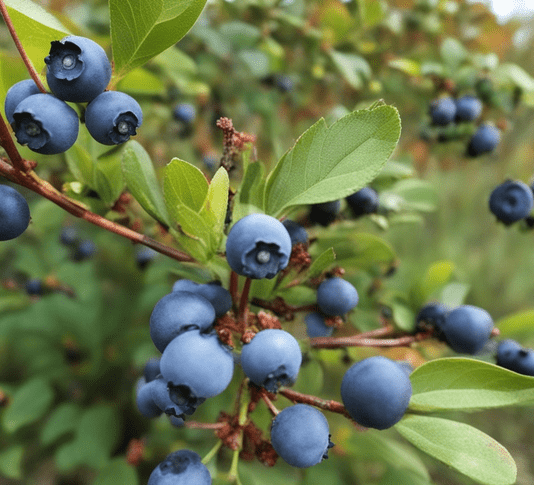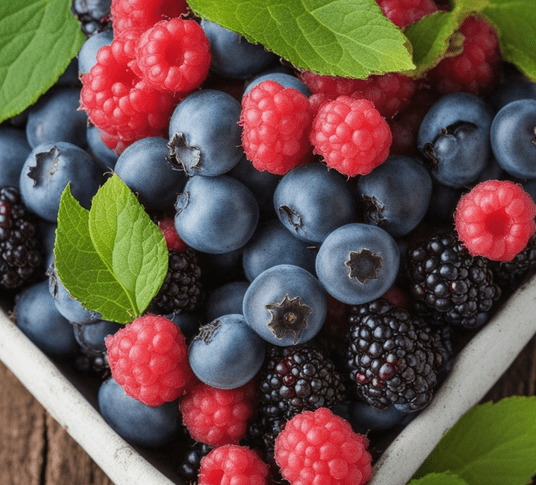Have you ever envisioned the delightful sight of fresh, plump lowbush blueberries thriving in your backyard? Curious about the secrets behind cultivating these little bursts of flavor? Welcome to “How to Plant Lowbush Blueberries,” your comprehensive guide to turning that dream into a fruitful reality. Discover the step-by-step process, from choosing the ideal location to nurturing these charming plants and harvesting their delectable treasures. Dive in, and join us on a journey that promises not just blueberries but the joy of nurturing your own fruitful haven.
Choosing the Right Location for Planting Lowbush Blueberries
Introduction: Selecting the perfect spot for lowbush blueberries is crucial for their successful growth. Here’s what you need to consider:
- Sunlight Exposure: Lowbush blueberries thrive in full sun, requiring at least six hours of direct sunlight daily for optimal growth and fruit production.
- Air Circulation: Ensure adequate air circulation around plants to prevent diseases and promote healthy growth.
- Soil Drainage: Opt for well-draining soil to prevent waterlogging, supporting healthy root development.
- Elevation and Frost Protection: Choose sites with adequate elevation to avoid frost pockets, protecting lowbush blueberries from cold damage.
- Structural Support: Provide support like trellises or netting to protect lowbush blueberries from harsh winds and maintain their structure.
- Microclimates: Consider microclimates in your garden to identify pockets with specific temperature and moisture conditions suitable for these plants.
Preparing the Soil for Planting Lowbush Blueberries
Introduction: Proper soil preparation sets the stage for healthy lowbush blueberries. Follow these steps for optimal soil conditions:
Early Preparation: Clear the planting area of weeds and debris in advance to create a conducive environment for lowbush blueberries.
Incorporating Organic Matter: Enhance soil fertility by adding compost or organic matter, ensuring a nutrient-rich environment for plant growth.
Soil Test: Conduct a soil test to understand its pH and nutrient levels, enabling appropriate adjustments for optimal growth.
pH Adjustment: Modify soil pH, aiming for acidic conditions (around 4.0-5.0) suitable for lowbush blueberries’ growth.
Enhancing Drainage: Improve drainage by adding organic materials or amending soil texture to prevent waterlogging.
Weed Control: Maintain weed-free surroundings to minimize competition for nutrients and reduce potential pest habitats.
Selecting and Purchasing Lowbush Blueberries Plants
Unlock the secret to choosing the perfect lowbush blueberries. Here’s a quick guide:
Plant Health Check: Inspect plants for vigor, healthy foliage, and absence of pests or diseases, ensuring they’re ready for transplantation.
Root Evaluation: Choose plants with robust root systems, as they establish better in new locations.
Varietal Selection: Select lowbush blueberry varieties suitable for your climate and garden conditions, ensuring better adaptability and productivity.
Planting Lowbush Blueberries – Step-by-Step Guide
Embark on the journey of planting lowbush blueberries with this detailed guide:
Selecting Quality Plants: Choose plants with healthy roots and foliage, avoiding any signs of disease or stress.
Timing is Everything: Plant lowbush blueberries in early spring or late fall, avoiding extreme temperatures for their successful establishment.
Digging the Perfect Hole: Dig holes wide and deep enough to accommodate the root system, ensuring proper spacing and root coverage.
Planting Depth Matters: Set plants at the same depth as in nursery containers for healthy root development.
Mulch for Moisture Retention: Apply organic mulch around plants to retain moisture, suppress weeds, and regulate soil temperature.
Watering: Maintain consistent soil moisture during the establishment phase to support root growth.
Support Structures: Install supportive structures like cages or netting to protect lowbush blueberries and facilitate easier maintenance.
Monitor and Adjust: Regularly check soil moisture and adjust watering based on weather conditions for optimal plant health.
Prune for Growth: Prune dead or damaged branches for healthy growth and structure.
Caring for Lowbush Blueberries
Nurturing lowbush blueberries ensures a bountiful harvest. Discover essential care practices:
Watering: Maintain consistent moisture levels, especially during dry spells, for healthy growth and fruit development.
Fertilizing: Apply balanced fertilizer according to plant needs to support healthy foliage and fruit production.
Mulching: Renew mulch annually to retain moisture, suppress weeds, and maintain soil temperature.
Pruning: Regularly prune dead or weak branches to encourage new growth and maintain a healthy plant structure.
Training and Support: Provide adequate support to growing canes to prevent breakage and encourage upright growth.
Pest and Disease Monitoring: Routinely inspect plants for pests and diseases, taking preventive measures to protect lowbush blueberries.
Harvesting Practices: Harvest ripe berries gently to avoid plant damage and enjoy delicious, homegrown fruits.
Winter Preparation: Prepare lowbush blueberries for winter by applying a protective layer of mulch around the base.
Pruning and Training Lowbush Blueberries
Introduction: Pruning and training are vital for healthy lowbush blueberries. Here’s a detailed guide:
Pruning Steps
Remove Dead or Diseased Wood: The first step in pruning lowbush blueberries is identifying and eliminating any dead or diseased wood. Prune these sections close to the base to prevent the spread of diseases and maintain overall plant health.
Thinning Out Branches: Overcrowded branches hinder air circulation, fostering an environment conducive to diseases. Thinning out branches by selectively removing some canes helps improve air circulation and reduces the risk of fungal infections.
Encourage New Growth: Regularly pruning back older branches stimulates the growth of new, vigorous shoots. This not only invigorates the plant but also promotes the development of fresh fruiting wood, ensuring a continuous supply of berries.
Training Techniques
Trellising: Trellising lowbush blueberries is an effective technique to manage their growth. Install trellises or stakes to provide support for the canes, preventing them from sprawling on the ground. This not only makes harvesting easier but also reduces the risk of pest infestations and diseases.
Regular Pruning Schedule: Adopting a consistent pruning schedule is crucial for maintaining the desired shape and structure of lowbush blueberry plants. Consider an annual pruning session during late winter or early spring when the bushes are dormant. This helps to remove any winter-damaged or weak branches, setting the stage for robust spring growth.
Selective Pruning for Size Control: If space is a consideration, selective pruning can be employed to control the size of lowbush blueberry bushes. Focus on cutting back long or overly vigorous shoots to maintain a compact and manageable size while preserving the plant’s productivity.
Maintaining an Open Center: Encourage an open center structure by selectively pruning branches that cross or grow towards the center of the plant. This practice enhances air circulation, sunlight penetration, and accessibility for harvesting.
Removing Low-Hanging Branches: Eliminate branches that hang close to the ground, as they are more susceptible to diseases and pest attacks. By maintaining a certain height from the ground, you reduce the risk of soil-borne issues affecting your lowbush blueberries.
Common Pests and Diseases of Lowbush Blueberries
Common Pests
Blueberry Maggots (Rhagoletis spp.): Identification: Adult flies lay eggs in developing berries, and larvae cause damage by feeding inside. Protection: Install fine mesh netting over bushes during the fruiting season to prevent adult flies from laying eggs.
Aphids: Identification: Small, sap-sucking insects found on the undersides of leaves, causing leaf curling and stunted growth. Protection: Introduce natural predators like ladybugs or use insecticidal soaps for control.
Spider Mites: Identification: Fine webbing on leaves and stippling caused by tiny mites feeding on plant juices. Protection: Regularly spray plants with water to deter mites, and consider introducing predatory mites for biological control.
Blueberry Gall Midge (Dasineura oxycoccana): Identification: Larvae feed on buds, causing distorted growth. Protection: Prune affected shoots and apply insecticides during the dormant season.
Japanese Beetles: Identification: Metallic green and copper beetles that skeletonize leaves. Protection: Handpick beetles or use neem oil; consider introducing parasitic nematodes to control larvae in the soil.
Common Diseases
Mummy Berry (Monilinia vaccinii-corymbosi): Identification: Infected berries turn tan and hard, resembling mummies. Protection: Apply fungicides during bud break, and practice good sanitation by removing mummified berries.
Leaf Spot (Septoria spp.): Identification: Dark spots with a yellow halo on leaves. Protection: Prune affected branches, apply fungicides, and ensure proper spacing for air circulation.
Botrytis Blight (Botrytis cinerea): Identification: Gray mold on berries and shoots, particularly in humid conditions. Protection: Improve air circulation, prune for better ventilation, and apply fungicides preventively.
Powdery Mildew (Podosphaera spp.): Identification: White powdery substance on leaves and shoots. Protection: Use fungicide treatments, ensure proper spacing, and choose mildew-resistant varieties.
Root Rot (Phytophthora cinnamomi): Identification: Wilting, decline, and dieback due to root damage. Protection: Improve soil drainage, avoid waterlogged conditions, and consider using fungicide drenches.
How To Harvest Lowbush Blueberries
Harvesting lowbush blueberries is a gratifying culmination of your cultivation efforts. The sweet reward of plump, flavorful berries is best enjoyed when picked at the peak of ripeness. In this section, we’ll delve into the essential steps for harvesting lowbush blueberries with care to maximize yield and quality.
Timing is Crucial:
- Ripe Berry Indicators: Identification: Look for berries with uniform color, a deep blue hue, and a slightly dull appearance. Ripe berries should easily detach from the stem with a gentle tug.
- Harvest Season: Timing: Lowbush blueberries typically ripen in late spring to early summer. Regularly monitor the color changes of the berries to determine the optimal harvesting time.
Harvesting Techniques:
- Handpicking: Method: Gently grasp the ripe berries between your fingers and thumb, giving a slight twist to detach them from the stem. Collect the berries in a shallow container to prevent crushing.
- Use of Harvest Combs: Tool: Utilize handheld harvest combs or rakes designed for lowbush blueberries. Gently comb through the branches to dislodge ripe berries, allowing them to fall onto a collection surface.
- Frequent Harvests: Strategy: Conduct regular harvesting sessions every few days during the peak season. This ensures that you gather berries at their prime ripeness and prevents overripening on the bush.
Harvesting Tips for Quality:
- Handle with Care: Guideline: Avoid squeezing or compressing the berries, as this can lead to bruising. Handle them delicately to maintain their pristine quality.
- Morning Harvests: Recommendation: Opt for morning harvesting when temperatures are cooler. This helps preserve the freshness of the berries and reduces the risk of post-harvest softening.
- Check for Debris: Precaution: Regularly inspect harvested berries for any leaves, twigs, or other debris. Clean berries have a longer shelf life and are more appealing for consumption.
Post-Harvest Practices:
- Immediate Cooling: Procedure: Transfer harvested berries to a cool environment promptly. Rapid cooling helps maintain their firmness and prolongs their shelf life.
- Storage Conditions: Guidance: Store harvested lowbush blueberries in the refrigerator, preferably in perforated containers to allow air circulation. Consume or process them within a few days for the best flavor.
Conclusion:
By familiarizing yourself with the signs of common pests and diseases affecting lowbush blueberries, you can proactively protect your crop and ensure a bountiful harvest. Regular monitoring, early intervention, and a holistic approach to plant health management will contribute to the long-term success of your lowbush blueberry cultivation.



